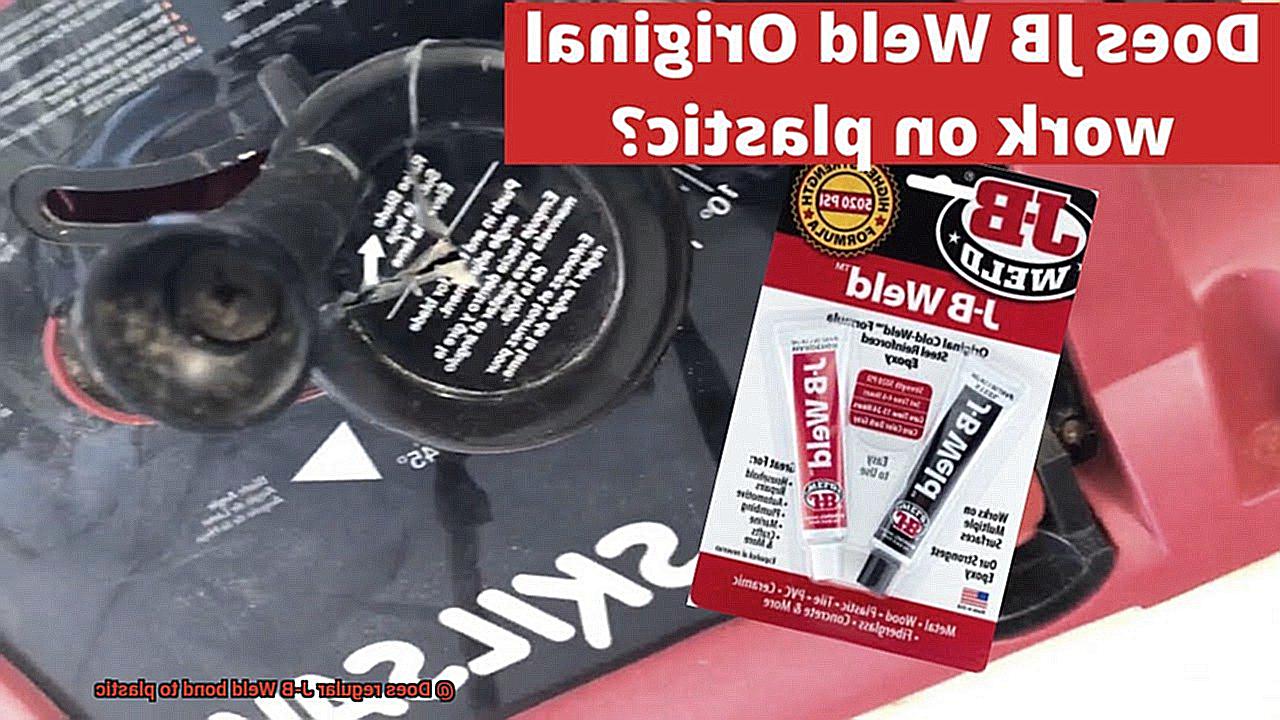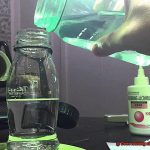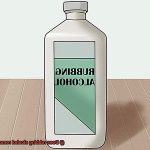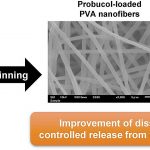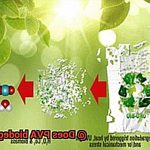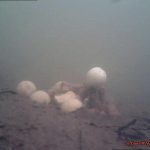Are you tired of plastic items piling up in your home? Do you have a sentimental attachment to a broken plastic item that you just can’t bear to toss? If so, you may be wondering if regular J-B Weld is the solution to your problem.
J-B Weld is a two-part epoxy renowned for its strength and durability. While it’s commonly used for metal, wood, and concrete repairs, can it work on plastic too? The answer isn’t as simple as you might expect.
In this blog post, we’ll explore the fascinating world of J-B Weld and its compatibility with plastic. We’ll delve into the different types of plastics and their bonding capabilities with regular J-B Weld. Additionally, we’ll share some dos and don’ts for using this bonding agent on plastic and provide helpful tips to ensure a lasting bond.
Whether you’re an avid DIY enthusiast or just curious about the possibilities of J-B Weld, keep reading to learn everything about bonding plastic with this popular adhesive. Let’s dive in together and discover if regular J-B Weld is the perfect solution for fixing your beloved plastic items.
What is J-B Weld?
Contents
- 1 What is J-B Weld?
- 2 Does Regular J-B Weld Bond to Plastic?
- 3 Factors Influencing the Bonding of J-B Weld to Plastic
- 4 Types of Plastics that are Easier to Bond with J-B Weld
- 5 Preparing the Surface for the Best Results when Using J-B Weld on Plastic
- 6 Applying J-B Weld to Plastic
- 7 Specialized Epoxy Adhesives for Bonding Plastic
- 8 Conclusion
When it comes to bonding almost any surface, J-B Weld is the answer. This two-part epoxy adhesive has been on the market for over 50 years, and its reputation for strong bonding and versatility has made it a household name.
Initially developed by Sam and Mary Bonham in the 1960s to repair cast iron engine blocks, J-B Weld has come a long way since then. Its ability to bond metal, wood, ceramic, plastic, and more has made it a go-to choice for mechanics, repair professionals, and DIY enthusiasts.
J-B Weld’s strength lies in its ability to withstand extreme conditions. Its high-temperature version can handle up to 550 degrees Fahrenheit, making it perfect for automotive repairs. It is also waterproof and resistant to chemicals, making it an excellent choice for outdoor or marine repairs.
But not all surfaces are created equal, and proper surface preparation is essential for a successful bond. For plastic surfaces, cleanliness is key. Removing dirt, grease, or other contaminants will ensure a better bond. Roughing up the surface with sandpaper can also provide a better grip for the adhesive.
J-B Weld comes in various formulations designed for specific applications. From high-temperature to clear versions, there’s one for every need. The clear version can be used when you need an invisible bond line.
Does Regular J-B Weld Bond to Plastic?
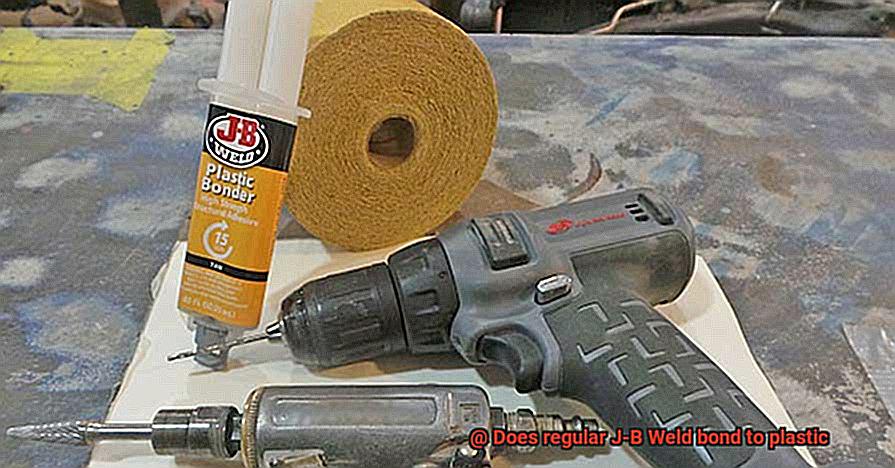
This trusted brand of epoxy adhesive has been a go-to for DIY enthusiasts and professionals alike for over half a century. However, when it comes to bonding plastic, there are some important factors to consider before using regular J-B Weld.
Firstly, it is crucial to understand that not all plastics are created equal. Some types of plastic, such as polyethylene and polypropylene, have low surface energy which makes it difficult for adhesives to stick to them. In cases like these, J-B Weld offers a specialized adhesive called “PlasticWeld” that is specifically designed for bonding these types of plastic.
Secondly, proper preparation is key when it comes to bonding plastic with J-B Weld. Before applying the adhesive, the surface of the plastic should be thoroughly cleaned and degreased to remove any contaminants. Additionally, lightly sanding the surface can help create a rougher texture for better adhesion.
Lastly, following the instructions on the J-B Weld packaging is essential. Mixing the two-part epoxy adhesive in the correct ratio and allowing sufficient curing time are crucial steps in achieving a strong bond that lasts.
Factors Influencing the Bonding of J-B Weld to Plastic
If you’re looking to bond plastic with J-B Weld, there are several crucial factors to consider. As an expert in this field, I know that not all plastics are created equal, and some can be notoriously difficult to bond with any adhesive, including J-B Weld. So, let’s dive into the various factors that can influence the success of bonding J-B Weld to plastic.
One of the most significant factors to consider is the type of plastic being used. Certain plastics, like polyethylene and polypropylene, have a low surface energy that makes it challenging for adhesives to stick. However, J-B Weld offers a specialized adhesive called “PlasticWeld” specifically designed for these tricky materials. So, if you’re dealing with polyethylene or polypropylene, fear not.
The surface preparation of the plastic is another crucial factor that should not be overlooked. For J-B Weld to adhere correctly to the plastic surface, it must be clean and free of any contaminants like oils or grease. To achieve this, you should clean the surface thoroughly with a solvent or degreaser and then roughen it up with sandpaper or a wire brush.
Temperature also plays a significant role in the success of bonding J-B Weld to plastic. Both the plastic and J-B Weld should be at room temperature before application. If either material is too cold or too hot, it can affect the curing process and ultimately weaken the bond. Therefore, it’s essential to ensure both materials are at an optimal temperature before proceeding with your bonding project.
Lastly, it is essential to consider the thickness of the J-B Weld application. Applying a thin layer may not provide enough surface area for a strong bond to form, while a thick layer can take longer to cure and may not fully adhere to the plastic. Therefore, applying J-B Weld in thin layers is recommended, building up as necessary for a stronger bond.
Types of Plastics that are Easier to Bond with J-B Weld
When it comes to bonding plastic materials, it is important to consider the type of plastic and the adhesive being used. J-B Weld is a popular brand of epoxy adhesive known for its strong bonding capabilities. However, not all plastics are created equal when it comes to bonding with J-B Weld. In this article, we’ll explore the types of plastics that are easier to bond with J-B Weld and why.
ABS (Acrylonitrile Butadiene Styrene)
ABS is a thermoplastic that is commonly used in automotive parts and toys due to its excellent impact resistance. When it comes to bonding with J-B Weld, ABS is one of the easiest types of plastic to work with.
PVC (Polyvinyl Chloride)
PVC is another popular plastic used in construction materials, pipes, and electrical cable insulation. Although PVC has a smooth surface, J-B Weld can still bond well with PVC if the surface is properly roughened up before bonding.
Polycarbonate
Polycarbonate is a strong and transparent plastic that is commonly used in eyeglass lenses and medical equipment. With proper cleaning and surface preparation, J-B Weld can bond well with polycarbonate.
Nylon
Nylon is a durable plastic that is commonly used in various industries such as automotive and sports equipment. While nylon has low surface energy, J-B Weld can still bond well with it if the surface is properly cleaned and roughened up.
Acetal
Acetal is a thermoplastic used in mechanical parts such as gears and bearings. While it has good strength and stiffness, it can be difficult to bond due to its low surface energy. However, J-B Weld can still bond with acetal if the surface is properly prepared.
It’s important to note that J-B Weld also has special formulas designed to bond with specific types of plastic such as Polyethylene (PE) and Polypropylene (PP), acrylic (PMMA), polycarbonate (PC), and ABS. These formulas are specifically designed to bond with the unique properties of these plastics.
In general, rough surface textures or surfaces that have been properly roughened up tend to bond well with J-B Weld. Additionally, proper cleaning and surface preparation are key to achieving a strong bond between plastic materials and J-B Weld. It’s always best to test a small area first before applying J-B Weld to the entire surface.
Preparing the Surface for the Best Results when Using J-B Weld on Plastic
If you’re planning to use J-B Weld on plastic surfaces, then you need to prepare the surface properly. The key to achieving long-lasting and strong results is through meticulous preparation. Here are some essential steps to follow:
Clean the Surface Thoroughly
The surface must be free from any debris, oils, or dirt before applying the J-B Weld. Use a mild detergent or soap and water to clean the surface. Rinse it thoroughly with clean water and let it dry completely.
Roughen the Surface Lightly

Using fine-grit sandpaper, lightly roughen the plastic surface. This step will aid in enhancing adhesion and providing a better bond between the plastic and J-B Weld. While sanding, ensure evenness and avoid creating deep scratches that may weaken the plastic.
Clean the Surface Again
After sanding, clean the surface again using soap and water to remove any dust or debris left behind from sanding. Ensure that it’s dry before moving on to the next step.
Apply the J-B Weld Evenly

Follow the instructions provided on your J-B Weld kit carefully and apply it evenly to both surfaces that need bonding.
Applying J-B Weld to Plastic
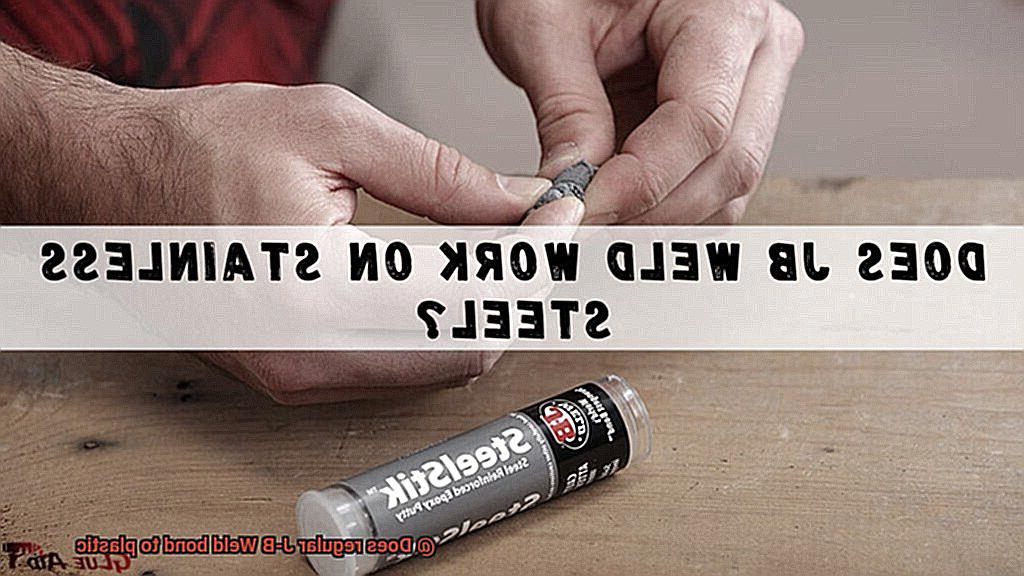
J-B Weld might just be the solution you need. However, before diving in, it’s important to know that applying J-B Weld to plastic requires proper preparation. As an expert on the subject, I’ve compiled some research notes and tips to help you out.
Firstly, it’s essential to note that regular J-B Weld is not specifically designed for use on plastics. Nevertheless, it can still be effective in certain situations. So, what steps should you take before applying J-B Weld to plastic surfaces?
The first step is to clean and dry the surface thoroughly. Dirt, grease, or other contaminants can interfere with the bonding process and prevent a lasting repair. So, grab a clean cloth and wipe the surface clean, then let it dry completely.
Different types of plastic may have varying levels of success when it comes to bonding with J-B Weld. In some cases, it may be helpful to sand or roughen the surface of the plastic before applying J-B Weld. This creates a rougher surface area for the adhesive to bond with, improving its effectiveness.
To increase your chances of achieving a strong and lasting bond, consider using a plastic-specific primer or pre-treatment product before applying J-B Weld to plastic surfaces. This can help prepare the surface for better adhesion and ensure a stronger bond.
Once you’ve completed these steps, it’s time to apply the J-B Weld. Follow the instructions provided on your kit carefully. Make sure to apply it evenly and avoid over-applying or under-applying.
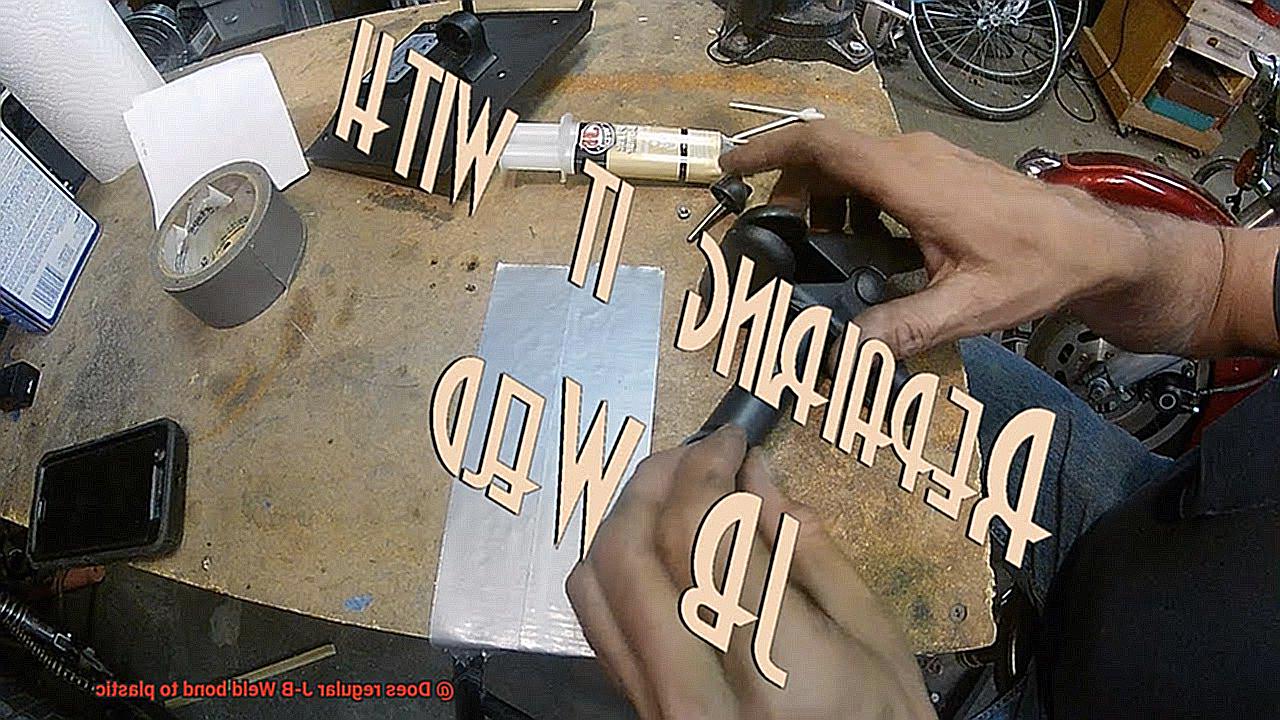
Specialized Epoxy Adhesives for Bonding Plastic
These powerful adhesives are specifically formulated to work with plastic materials, providing a strong and durable bond that will last for years.
But what makes specialized epoxy adhesives so unique? For starters, they offer a long-lasting bond that won’t weaken over time. Plastic materials can be difficult to bond together naturally, but a specialized epoxy adhesive ensures a strong and secure connection that will stand the test of time.
Another key benefit of using specialized epoxy adhesives for bonding plastic is their ability to resist a range of environmental conditions. Many types of plastic can be sensitive to changes in temperature or humidity, which can cause them to warp or crack over time. However, with the use of specialized epoxy adhesives, it is possible to create a bond that will remain strong and stable even in challenging environmental conditions.
When selecting a specialized epoxy adhesive for bonding plastic, there are several factors to consider. Firstly, it’s important to consider the specific type of plastic being bonded and the strength and durability requirements of the bond. Secondly, any environmental conditions that may impact the bond over time should be evaluated. By carefully considering these factors and selecting an appropriate adhesive, it is possible to create a strong and long-lasting bond between plastic materials.
djtKXkTqPUI” >
Conclusion
In conclusion, J-B Weld is a powerhouse two-part epoxy adhesive that has been dominating the market for over 50 years with its exceptional strength and durability. This versatile adhesive can bond various materials including plastic, but not all plastics are created equal. To ensure a successful bond, it’s crucial to consider the type of plastic being used and follow proper surface preparation techniques.
When dealing with low surface energy plastics like polyethylene and polypropylene, adhesives struggle to stick. However, J-B Weld offers a specialized adhesive called “PlasticWeld” that is specifically designed for bonding these types of plastic. This game-changing adhesive provides an easy solution for those tricky-to-bond plastics.
Proper preparation is key when bonding plastic with J-B Weld. The surface of the plastic should be thoroughly cleaned and degreased to remove any contaminants before applying the adhesive. Additionally, lightly sanding the surface can create a rougher texture that enhances adhesion.
While regular J-B Weld can work on certain types of plastics with proper preparation, specialized epoxy adhesives formulated explicitly for plastic materials offer even stronger bonds that resist environmental conditions and provide long-lasting connections between plastic materials.

